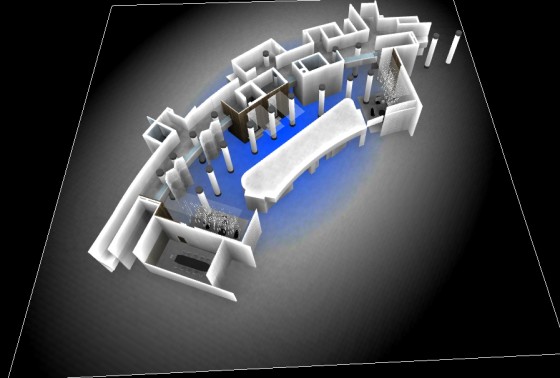Britto Charette found a way to help the “spatially challenged” understand the plan.
Interior design firm Britto Charette specializes in luxury interiors for a global clientele. Their work has been in leading design publications, and their staff is well-traveled and multilingual. But it wasn’t just a striking design plan or a packed resume that won a recent competition to renovate the lobby of The Majestic Tower in Bal Harbour, Florida, it was the “wow factor” of using holographic imagery to explain and display the plan.

“When you are presenting to people who aren’t architects or designers, you need a bridge,” says David Charette, principal of Britto Charette. “We’ve found that many people have difficulty understanding how a space will look in 3D, but with a hologram, they get a complete picture.”
Working from as-built drawings of the site, Britto Charette used Trimble SketchUp to construct a 3D model of the lobby. Next a Zebra Imaging holographic printer broke the 3D data down into subsets corresponding to “hogels” (think: three-dimensional pixels) and imaged these hogels onto a photopolymer film. When illuminated with direct light, the flat photopolymer film recreates a field of light in which the 3D model appears in space.
As a result, Charette says his firm was able to more effectively communicate the overall scope of the project and the spatial relationships within its design at a glance, without having to ask the client to master complex 3D software or wear cumbersome virtual reality headsets or goggles to navigate the lobby.

“When trying to communicate a project, designers used to share perspective drawings created by hand. Later, computer renderings were used,” says Charette. “But people who were spatially challenged still had trouble understanding the final layout. The hologram allowed us to show the board and building owners a clear picture of our design.”
Charette cited the ‘wow factor’ of a holographic print as the key component to the success of the pitch, and said that Britto Charette plans to create holograms for future projects to give its designs a competitive edge.
“The clients loved the Star Wars aspect of the technology,” he says “They were excited to see what was possible. In the end, that was extremely cost-effective for us, because it helped us compete with others who were bidding on the project, while showing the clients our ideas in a way that was completely new to them. It worked.”
A short video of moving the holographic sheet to view the design. (Source: Britto Charette)





